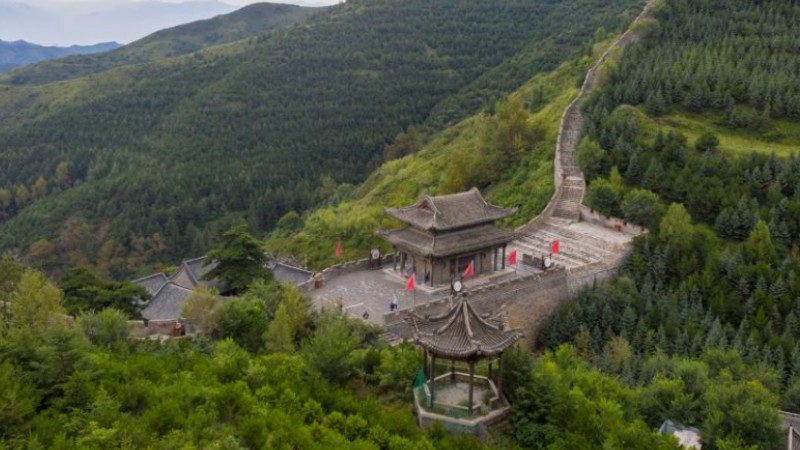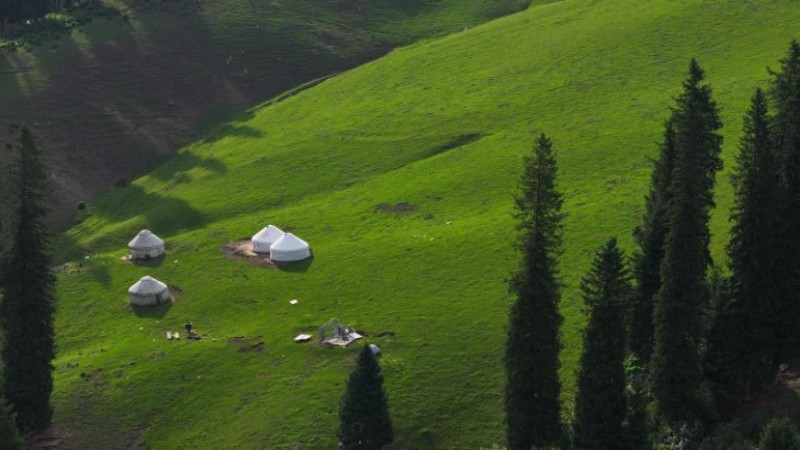China buckles down to protect snow leopards on Qinghai-Tibet Plateau

A snow leopard is pictured in a canyon in Zadoi County of Yushu Tibetan Autonomous Prefecture, northwest China's Qinghai Province, Feb. 21, 2023. (Xinhua/Fei Maohua)
XINING, Sept. 2 (Xinhua) -- Kungari, a herdsman in Yushu Tibetan Autonomous Prefecture, northwest China's Qinghai Province, embarked on yet another climb along a steep mountain ridge to check on the infrared camera he had installed to monitor wildlife.
He took out the memory card and started flipping through the photos. It was during this moment that he stumbled upon a remarkable find: footage of snow leopards, one of the world's most mysterious big cats.
Snow leopards are the flagship species of the local plateau ecosystem. Under first-class state protection, snow leopards usually live in mountains between 2,500 meters and 5,000 meters high and can withstand temperatures as low as minus 40 degrees Celsius. The species is also known as the "king of snow mountains."
Starting from Sept. 1 this year, a law on ecological protection of the Qinghai-Tibet Plateau, also known as "the roof of the world," came into effect.
The Qinghai-Tibet Plateau, with an area of around 2.58 million square km, spans six provincial-level regions in western China, including Qinghai and Tibet.
Kungari's family has been grazing animals in a sleepy village, Chumarle County of Yushu for generations, and he has a deep understanding of the great changes that have taken place in the ecosystem of his hometown over the years. This knowledge has helped him spot the wildlife via infrared cameras.
"When I was young, I found that the environment of the grassland where my family grazes animals was getting worse each year. There were more and more black mud flats, and it was becoming increasingly difficult to feed our livestock. Some villagers moved out during those years," Kungari recalled.
Like many locals, Kungari had never previously seen snow leopards and was afraid of the animal, imagining it as a sort of "beast" that is often spoken of in stories.
However, as the local environment has improved, and with the protection efforts that have been made for wild animals in recent years, he came to realize that snow leopards will not attack humans unprovoked. He also realized that changes in the species' population can be used to determine the current restoration situation of the local ecological environment.
In 2017, at the call of the management office in Chumarle County under the Sanjiangyuan National Park, Kungari joined a newly established snow leopard monitoring team.
By establishing five monitoring locations along the upper reaches of the Yangtze River, spanning over 760 km, as well as the villages and townships administered by the county, the administration office managed to build an activity database for the local snow leopards, said Niu Shaopeng with the office.
Under the guidance of researchers and experts, the folk monitoring team, which has expanded from the initial 50 members to more than 100 today, has been spotting wildlife more frequently.
"The team has identified and monitored more than 60 snow leopards so far," said Lian Xinming, a researcher at the Northwest Institute of Plateau Biology under the Chinese Academy of Sciences, adding that some college students have become lecturers on ecological and environmental protection, while more and more people have realized the importance of ecology.
In August, three photographers, who are also herdsmen, saw their film of snow leopards hit the big screen.
Themed on a female snow leopard and her friends, the movie has allowed the public to learn more about the endangered wildlife on the plateau.
Photos
Related Stories
Copyright © 2023 People's Daily Online. All Rights Reserved.









